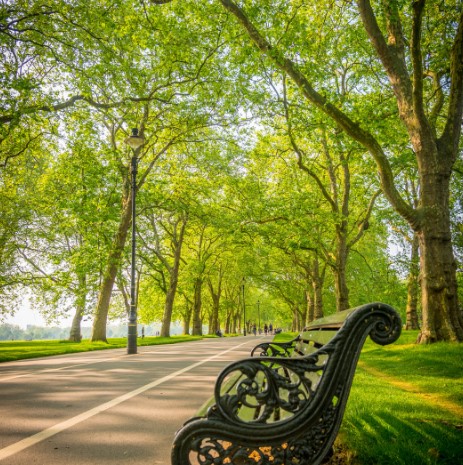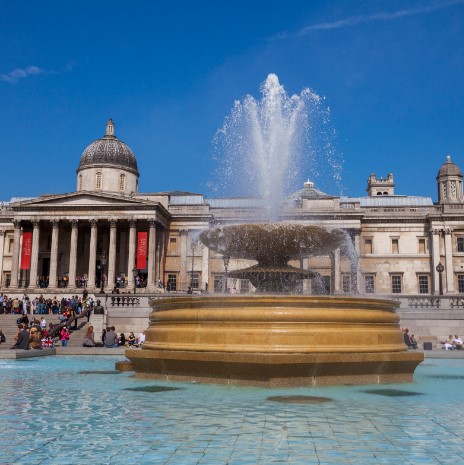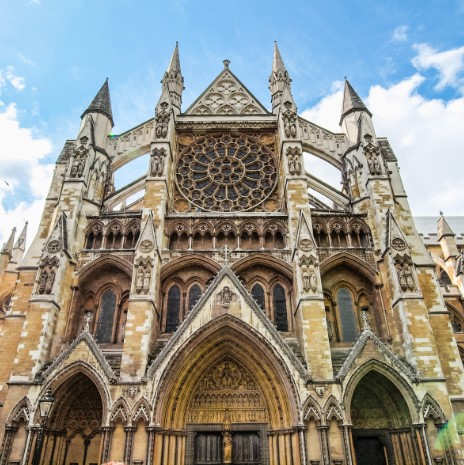sábado, 4 de junio de 2022
jueves, 2 de junio de 2022
World Environment Day, 5 June

World Environment Day is celebrated every year on 5 June. Initiated by the United Nations, the day is one of the main ways of raising environmental awareness and promoting political interest and action.
What is the environment?
The environment is the set of natural and man-made elements in which life (animal, human or plant) develops. The environment is therefore the surroundings in which human beings live: this environment includes air, water, soil, natural resources, living beings and species, fungi, microbes, ecosystems and the biosphere.
How is our planet doing?
There are major ecological problems that affect the lives of animals and humans on our planet. These include all forms of pollution, climate change, ozone layer depletion, the use and management of freshwater resources, excessive deforestation, desertification and land degradation, loss of biodiversity, etc.
We depend on our environment
A healthy environment is directly related to our health. If natural resources are over-consumed and the environment is degraded, people suffer and national economies deteriorate. With regard to the environment, sustainable development aims to combine the economic, social and environmental aspects of current development problems, meeting the needs of present generations without compromising the ability of future generations to meet their own needs.
Helping our planet
World Environment Day was launched in 1972, the same day that the United Nations Environment Programme (UNEP) was created. UNEP is the highest environmental authority in the United Nations system. Its mission is to provide leadership and foster cooperation to protect the environment. It is also a source of inspiration and information, and an instrument for improving the quality of life of ecosystems and all living species.
Suggested actions
- Save water and energy by using energy-saving light bulbs, running the washing machine or dishwasher only when the machine is full or hanging clothes out to dry.
- Avoid single-use products such as wipes, tissues and disposable cutlery. Instead, use sustainable and reusable alternatives. Also avoid buying over-packaged products and compost at home. This will reduce the pressure you put on the environment by producing waste.
- Get involved in an environmental organisation or committee in your school or community. You will meet people who care about preserving our planet and who will offer you tools and actions to better understand and act.
- Put the 3R (reduce, reuse and recycle) method into practice. For example:
- Avoid aerosol products;
- Use recycled paper;
- Set up a composting system at school;
- Use a lunch box instead of disposable bags;
- Choose rechargeable batteries;
- Organise a garage sale to give a second life to items you and your family no longer use, etc.
- Use public transport, carpool or exercise (walking, jogging, cycling, inline skating...); it's good for your health! It is also good for your health and will reduce greenhouse gas emissions.
- Use reusable bags when you go shopping instead of always accepting the plastic bags offered to you.
World Bicycle Day - June 3

On 12 April 2018, the United Nations General Assembly proclaims 3 June as World Bicycle Day, in recognition of the uniqueness, longevity and versatility of the bicycle, which has been in use for more than two centuries. The General Assembly also highlights the advantages of the bicycle as a simple, economical, reliable, environmentally friendly and sustainable means of transport that promotes health for all.
The United Nations recently highlighted cycling as essential to the ecological transition in the wake of the COVID-19 pandemic, and the United Nations Environment Programme (UNEP) recalled that investing in pedestrians and cyclists - who make up the majority of a city's citizens - can save lives, as well as help protect the environment and reduce poverty.
The UCI is also delighted to be part of a global solidarity movement to be launched on 3 June by the NGO World Bicycle Relief (WBR). This organisation brings people together through the "power of bicycles", manufacturing and distributing purpose-built, sturdy bicycles assembled in recipient countries. They are then distributed to students, health professionals, entrepreneurs and workers in rural areas, where getting around is a challenge in itself.
#CyclingActsofKindness celebrates a simple idea: an act of kindness can change the world. What better day than today to spread kindness on two wheels? The concept couldn't be simpler. World Bicycle Relief is asking people around the world to:
- Get on your bike and go do a good deed.
Deliver a meal to a friend, collect food for a neighbour, plant a tree? Have fun and spread joy all around you! (respecting local social distancing guidelines, of course).
- Share your story on social media via #CyclingActsofKindness, #WorldBicycleDay, #3JuneWorldBicycleDay
To show the world the image of the goodness of cycling.
- Encourage your friends and family to follow the trend.
By taking the decision to cycle, thousands of people spread the good every day, all over the world. They may be motivated by personal reasons (health, freedom, independence), by the environment (an active and sustainable means of transport rather than a motorised one) or by the desire to help others (visiting a friend, running errands for the family, taking their children to play in the park). The aim of this campaign is to give visibility to and celebrate these acts of kindness around the world by bringing together cyclists and stories of great social impact.
4 June, International Day of Innocent Child Victims of Abuse

The purpose of this day is to raise awareness of the suffering endured by children around the world who are victims of physical, mental and emotional abuse, and to recall the commitment of the United Nations to the protection of children's rights. Its work is guided by the 1989 Convention on the Rights of the Child (CRC, United Nations, 2019).
It is an opportunity for people around the world to become aware of the monstrous impact of abuse, in all its forms, on children. It is also a time for organisations and individuals to learn about and participate in awareness-raising campaigns to protect children's rights (United Nations, 2012).
A little history
On 19 August 1982, at its special emergency session on the Palestinian question, the General Assembly, "appalled by the large number of Palestinian and Lebanese children who are innocent victims of Israel's acts of aggression", decided to designate 4 June each year as the International Day for Innocent Children Victims of Aggression (resolution ES-7/8, United Nations, 2019).
In 1997, the General Assembly adopted resolution 51/77 on the Rights of the Child, a landmark act in the drive to improve the protection of children in conflict situations.
In recent years, the number of violations against children has increased in many war zones. More and better action is needed to protect the 250 million children living in conflict-affected countries and territories; more and better action is needed to remove them from the violent extremists who target them; to promote international humanitarian and child rights laws; and to prosecute those responsible for their violations.
The 2030 Agenda for Sustainable Development gives us a blueprint for securing a better future for children; it includes for the first time a specific goal (16.2) for ending all forms of violence against children, and ending the abuse, neglect and exploitation of children is included in several other goals related to violence and conflict.
The six most widespread violations are: recruitment and use of children in warfare, killing, sexual violence, abduction, attacks on schools and hospitals, and denial of humanitarian access (United Nations, 2019).
Conflicts in the Democratic Republic of Congo (DRC), Yemen and Syria all show similar signs of children's exposure to a hostile environment. Violence has profoundly affected the lives of these children and has inevitably disenfranchised them. Action must be taken to remove these children from this violence.
Objective: to promote just, peaceful and inclusive societies
To meet this challenge, and to build more peaceful and inclusive societies, effective and transparent regulations and realistic and comprehensive budgets are essential. Among the first steps towards protecting individual rights are the implementation of a global birth register and the creation of more independent national human rights institutions around the world
Facts & figures
Among the institutions most affected by corruption are the police and the judiciary.
Corruption, bribery, embezzlement and tax evasion cost developing countries an estimated US$1.26 trillion each year, which could be used to improve the lives of those living on less than US$1.25 a day for at least 6 years.
73% of children under 5 years of age were registered at birth, but only 46% of people in sub-Saharan Africa were registered.
About 28.5 million school-age children not in primary school live in areas affected by war and conflict.
The rule of law and development are strongly interrelated and mutually reinforcing, and are therefore essential for sustainable development at the national and international levels.
Violence against children
- Violence directly affects more than one billion children worldwide and costs societies more than $7 trillion a year.
- Fifty per cent of the world's children experience violence every year.
- Every 5 minutes, somewhere in the world, a child is killed by violence.
- 1 in 10 children are sexually abused before they reach the age of majority.
- 9 out of 10 children live in countries that do not fully prohibit corporal punishment, leaving 732 million children without legal protection.
- All children can be victims of cyber-violence.
- 246 million children experience violence in schools each year.
1 in 3 students have been bullied by their peers at school in the last month, and at least 1 in 10 children have been cyberbullied.
martes, 31 de mayo de 2022
Hyde Park, London. Information about London

Hyde Park is the most important public park in London with some 140 hectares of green spaces, ideal for the recreation of the London population and tourists who come to enjoy the atmosphere of this oasis in the middle of so much brick, concrete and asphalt of the big city.
Adjacent to Hyde Park are other extensive parks such as St James's Park and Kensington Gardens.
Hyde Park was originally the property of the monks of Westminster Abbey, which was confiscated in 1536 by the then King Henry VIII, who subsequently used it for hunting. It was not until 1637 that Charles I inaugurated it as a public park.
Serpentine Lake
It has an elongated lake called Serpentine, which delimits the park with Kensington Gardens. This lake, created in 1730, can be navigated with rented canoes and you can observe the behaviour of the birds that inhabit it.
To the south of the lake is the Diana Princess of Wales Memorial Fountain, a large oval stone ring-shaped fountain dedicated to the princess.
Speakers' Corner
A very curious event that takes place in this park is the well-known Speakers' Corner in the north-west of the park. Here people gather freely every Sunday to discuss and debate their ideas on politics, religion and other issues.
Don't hesitate to stop by this park to lie on the grass or, if you're lucky, to enjoy one of the many open-air concerts that are often held here.
Location: In the city centre.
Underground stops at Hyde Park Corner, Marble Arch, Knightsbridge or Lancaster Gate stations.
También te puede interesar leer:
Trafalgar Square, London. Information about London

Trafalgar Square is undoubtedly the most representative and famous square in London, the undisputed meeting point for Londoners, with a constant influx of tourists who consider this square an essential visit on their trip to the English capital.
The most characteristic feature of this square built in 1845 is its great column, which pays homage to Vice Admiral Horatio Nelson, who won the victory at the Battle of Trafalgar, which gives its name to the busy square. This column reaches a height of over 50 metres, topped by a sculpture of the Vice Admiral. Surrounding the obelisk is a bronze sculpture of giant lions cast by the architect Sir Edwin Lutyens. Flanking the column are harmonious fountains of crystal clear water that provide a breath of fresh air, especially on hot days.
To the north of the square stands the building that gives Trafalgar Square its majestic appearance. This is the National Gallery, which has the most important collection of paintings in England, with works dating from 1250 to 1900. Another building worth admiring is the church of St Martin in the Fields in the north-west corner.
Charing Cross is the name of a street leading off the square. This point corresponds to London's kilometre zero, just like Puerta del Sol in Madrid.
Around Trafalgar Square are London's busiest areas with numerous restaurants, cinemas, cafes and shops. These areas are Chinatown and Soho.
Location: Trafalgar Square, London WC2N 5DN, Reino Unido +44 20 7983 4750
Underground with stop at Charing Cross station.
También te puede interesar leer:
Westminster Abbey, London. Information about London

Westminster Abbey is London's oldest and most popular religious building. Its construction dates back to 1045 when the then King Edward the Confessor ordained it on the advice of the Pope.
Most of the church that can be seen today dates from between 1245 and 1517, when the original Romanesque style was replaced by a Gothic style rebuilt by Henry III to honour the memory of King Edward the Confessor. The two towers of the main façade were added to the basilica in 1745.
The basilica is famous not only for its architectural beauty and decoration, but also for the events it has hosted and the personalities buried inside.
Since the coronation of William the Conqueror in 1066, all the coronation ceremonies of the English monarchs have taken place in Westminster Abbey, except those of Jane Grey, Edward V and Edward VIII.
Among the famous people buried here are some of the kings of England and illustrious personalities such as Charles Darwin and Isaac Newton, among many others.
Location: 20 Deans Yd, London SW1P 3PA, Reino Unido. +44 20 7222 5152
Underground Stops at St James' Park, Westminster.
Bus: Lines 3, 11, 12, 24, 29, 53, 70, 77, 77a, 88, 109, 148, 159, 170 y 211.